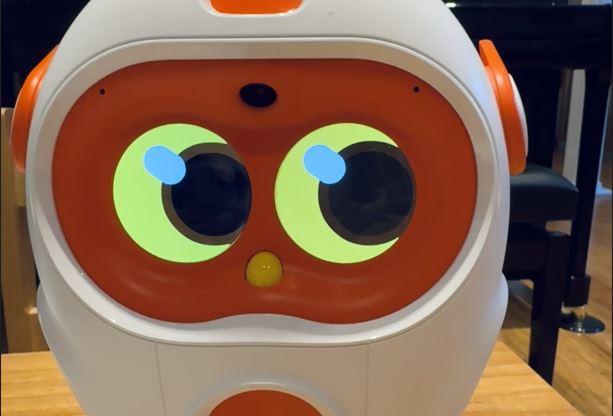Media release
From:
'One child called the robot "my little brother"': can assistance tech become part of the family?
In a new article published in Frontiers in Robotics and AI, Dr Zhao Zhao and her colleagues investigate the long-term lifespan of a social robot given to 20 families in 2021 to see whether it could help their children learn to read. Four years after their previous study, the robot was no longer needed for its primary purpose, but that didn’t mean it was no longer wanted. In this guest editorial, Zhao explores the new roles the robot that stayed took on — as keepsake, pet, and companion — and how our relationships to technology can change over time.
What happens to a social robot after it retires?
Four years ago, we placed a small owl-shaped reading robot named Luka into 20 families’ homes. At the time, the children were preschoolers, just learning to read. Luka’s job was clear: scan the pages of physical picture books and read them aloud, helping children build early literacy skills.
That was in 2021. In 2025, we went back — not expecting to find much. The children had grown. The reading level was no longer age-appropriate. Surely, Luka’s work was done.
Instead, we found something extraordinary.
18 of 19 families still had their robot. Many were still charging it. A few used it as a music player. Some simply left it on a shelf—next to baby books and keepsakes—its eyes still glowing gently. Luka had stayed.
This finding wasn’t just cute. It told us something deeper about how families relate to technology — not as tools that come and go, but as companions that take on new meaning over time.
In our interviews, parents and children described Luka in touching ways. One child called the robot “my little brother”. Another said Luka was the “only pet I ever had”. Some parents admitted they kept it more for themselves than for their kids — a nostalgic reminder of bedtime stories and early milestones.
The robot’s original purpose, reading aloud, had faded. But its emotional role had deepened. Families cared for it, joked about it, and in one case, passed it along to a younger cousin in what felt like a retirement ceremony. This wasn’t just long-term use, it was a long-term attachment.
In the research field of Human-Computer Interaction (HCI) and Human-Robot Interaction (HRI), we often focus on novelty, engagement metrics, and task performance. But our study shows that even a relatively simple robot — one that doesn’t move or speak freely — can become part of a family’s symbolic life. Like a favorite stuffed animal or a framed piece of childhood art, Luka transitioned from function to memory. One parent told us: “We don’t really use it anymore, but we couldn’t throw it out. It’s like part of our history.” Another joked that the robot would probably follow their child to college.
Even the robot’s placement in the home had meaning. Luka sat on bookshelves, desks, or bedside tables. One family added a doily underneath it. Another gave it a hand-drawn name tag. These weren’t gadgets stored away. They were artifacts on display.
What does this mean for designers and researchers?
It means we should think about a robot’s life not just in months — but in years. We should imagine transitions from tutor to companion, from helper to keepsake. We should consider how emotional attachment outlasts novelty, and how children's relationships with robots evolve, not disappear, with age.
Our participants taught us that children don’t always discard the ‘babyish’ robot — they reinterpret it. Some began ‘teaching’ Luka in return. Others made up bedtime stories for it or used it to soothe a younger sibling.
And when a robot is finally ready to leave, we might need better rituals — graceful exits that acknowledge the bond. After all, if a robot has been part of your child’s early years, you don’t just unplug it. You say goodbye.
As more families bring AI-powered companions into their homes, we’ll need to better understand not only how they’re used — but how they’re remembered.
Because sometimes, the robot stays.
Multimedia




 International
International



